Chapter 2. DIVERSITY III—ANIMALS
Learning Objectives
General Purpose
Conceptual
- Be able to compare and contrast the major groups within the kingdom Animalia.
- Be able to describe the major evolutionary trends in structures within the kingdom Animalia.
Background Information
Phylum Porifera: Sponges (see Figure 11-6)—Although classified in the animals, porifera have many characteristics of a colonial organism.
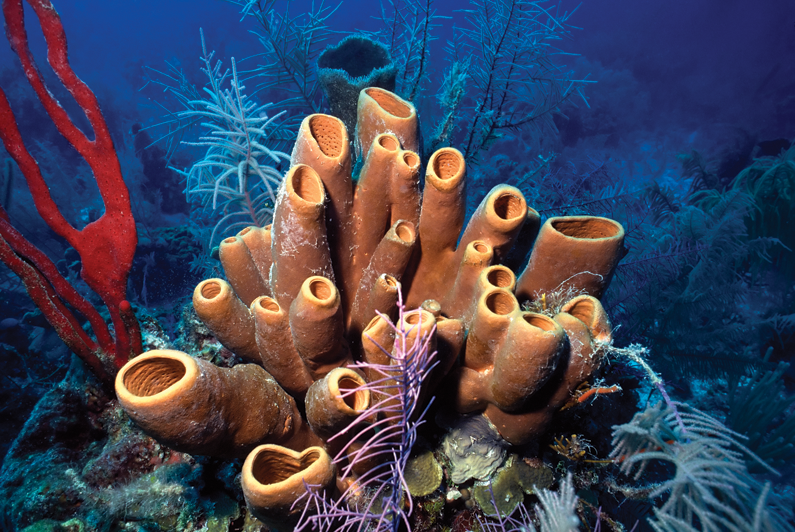
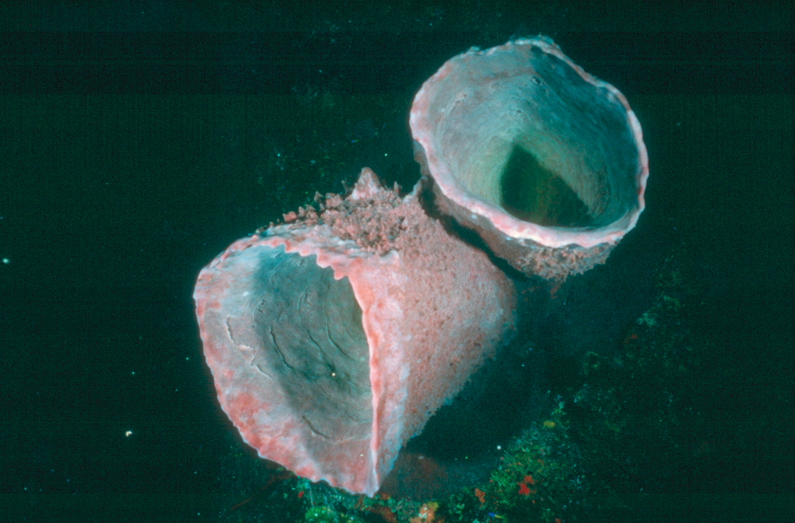
They seem to lack tissue level development; however, if the cells are separated they will reassociate to form small sponges. This ability to form association seems to require a form of cellular communication and interaction that may have been one of the first critical needs for multicellular existence. Although porifera have many characteristics of protista, their closest relatives are clearly multicellular. Sponges lack true symmetry. They are filter-feeders that draw in water and filter out the food particles. These food particles are then ingested. There is no digestive cavity, no coelom, and no segmentation present.
Phylum Cnidaria: Cnidarians are a diverse group of organisms, including corals, jellyfishes, sea anemones, hydras, and Portuguese men-of-war (see Figure 11-7). Most species are marine; however, there are a few freshwater species. Cnidarians have radial symmetry.
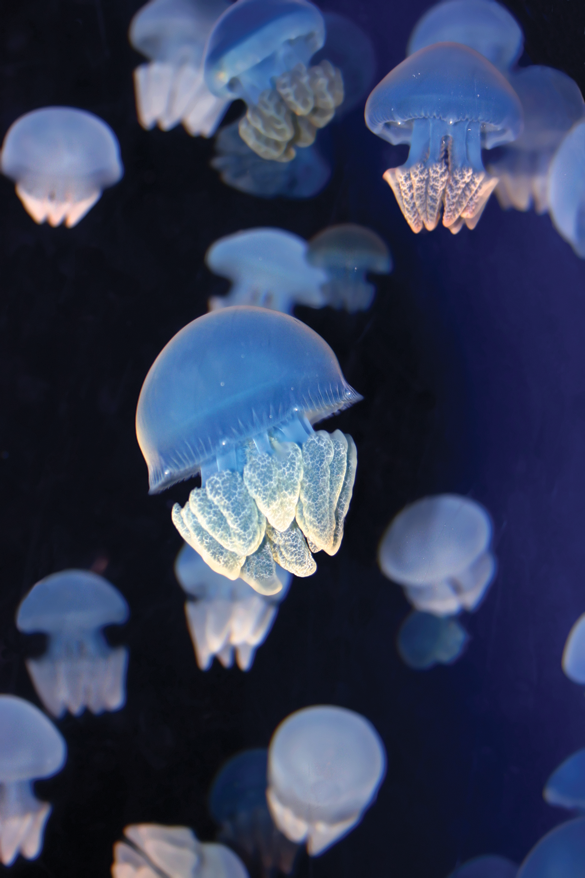
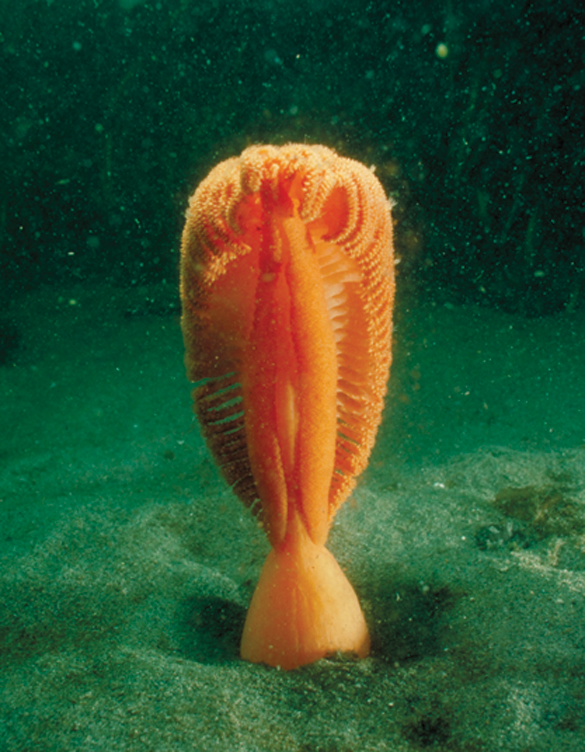
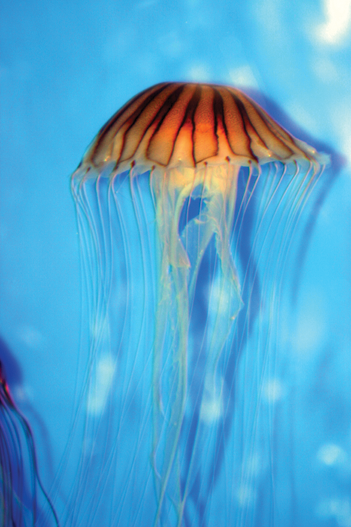


Cnidarians have a digestive tract with a single opening. This single opening can be upward or downward facing (see Figure 11-8). The form with an upward-facing opening is known as a polyp and is frequently stationary. The medusa is the form with the downward-facing opening.
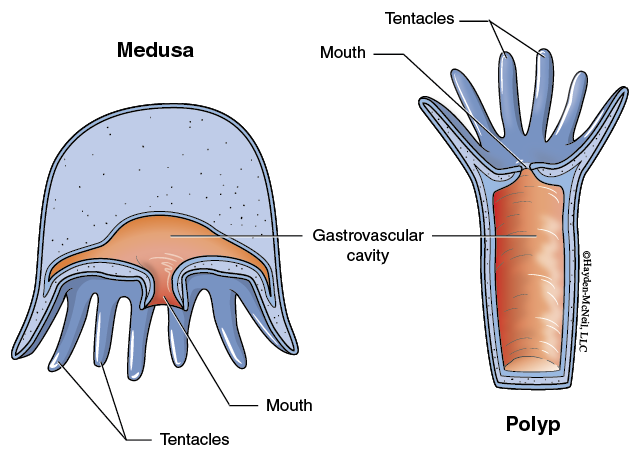
Surrounding the mouth opening of a cnidarian are the tentacles. In many cnidarians the tentacles have specialized cells called cnidocytes, which contain a stinging organelle called a nematocyst. When stimulated, the nematocyst will discharge from the cnidocyte with explosive force, trapping food or stinging predators. To see the action of a nematocyst, view the following video on YouTube showing a clip from a show on Animal Planet:
Phylum Platyhelminthes: Includes free-living flatworms like planarians that live under rocks, leaves, and debris in freshwater ponds and creeks. Flatworms have bilateral symmetry (see Figure 11-9).
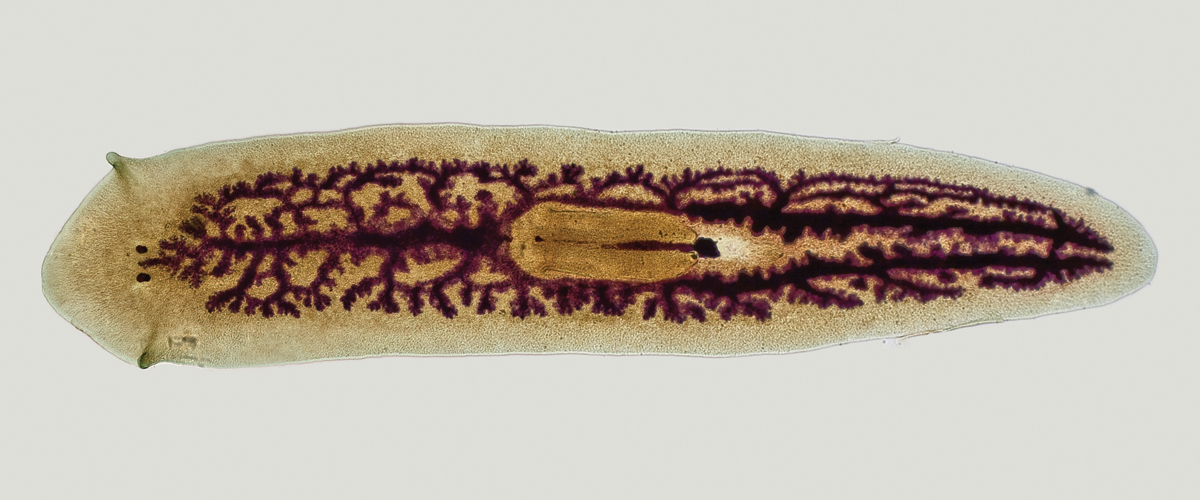
Members of phylum Platyhelminthes are dorso-ventrally flattened (thus the name flatworms). They move over surfaces using a combination of muscles in their body wall and cilia on their ventral sides. The flatworms have a digestive trait with two openings. In addition to a digestive system, some of the organisms in this phylum also show an excretory and a sensory system (see Figure 11-10).

Phylum Nematoda: Includes a large number of species that live in almost all moist environments. Nematode species are abundant in soil and are important beneficial microscopic decomposers. Nematodes are also known as roundworms and are pseudocoelomates (see Figure 11-11).
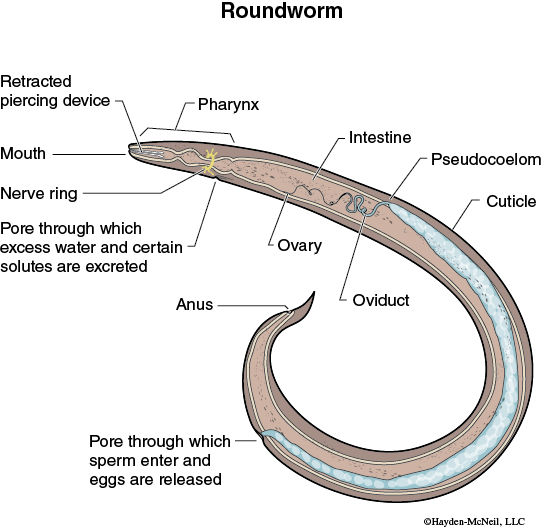
Many species of nematode are parasitic. Among the parasitic roundworms are the genus Ascaris that lives as a parasite in the intestines of mammals and D. immitis, heartworm, that infects dogs and cats.
Phylum Annelida is also known as the segmented worms. Annelids include a diverse group of organisms inhabiting a variety of environments. Species range in size from microscopic to several meters in length. Most annelids are marine species which live free in the open ocean or burrow in ocean bottoms. Other segmented worms live in freshwater or in soils. Lumbricus sp., commonly called earthworms, burrow through soils rich in organic matter (see Figure 11-12).
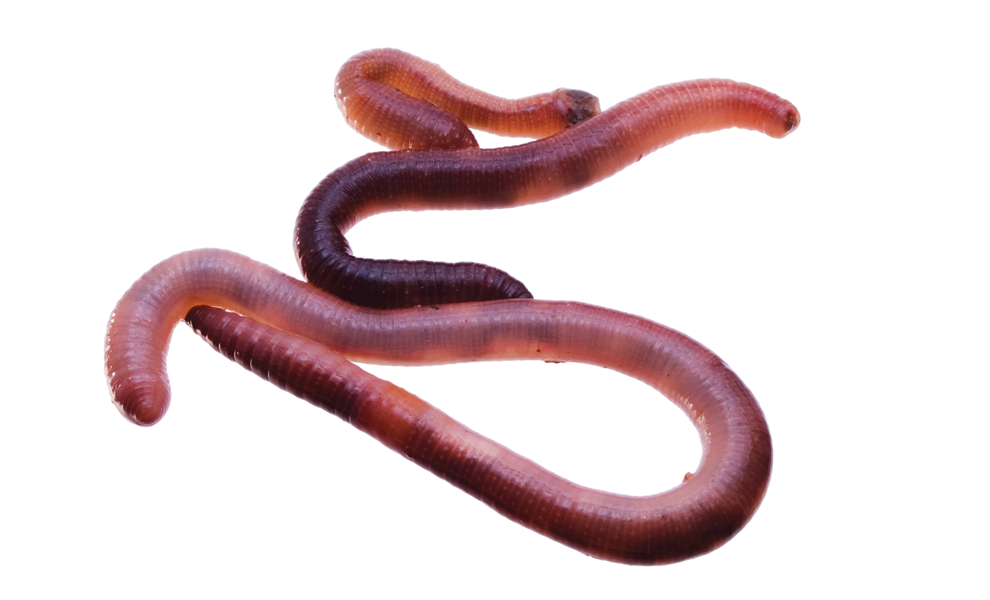
Many annelids have well-developed digestive and circulatory systems (see Figure 11-13).
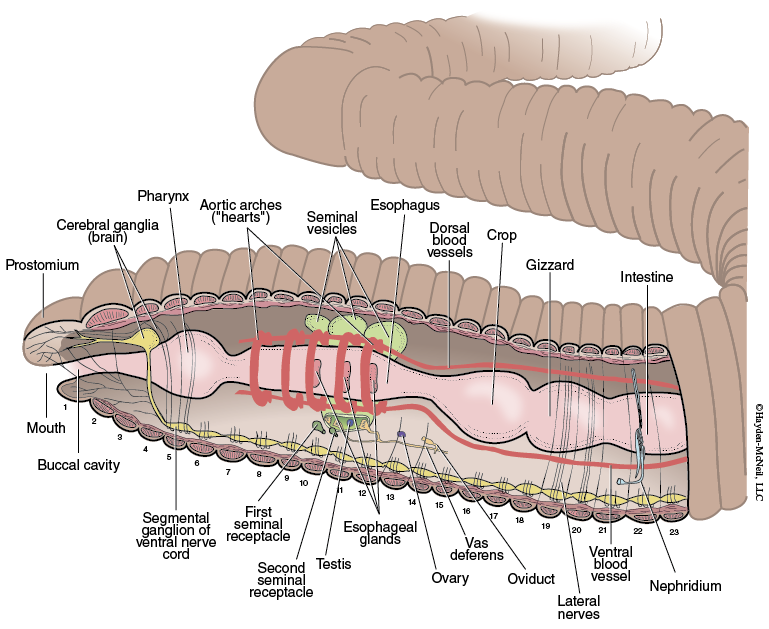
Pre-Lab Quiz
Proceed to the Pre-Lab Quiz